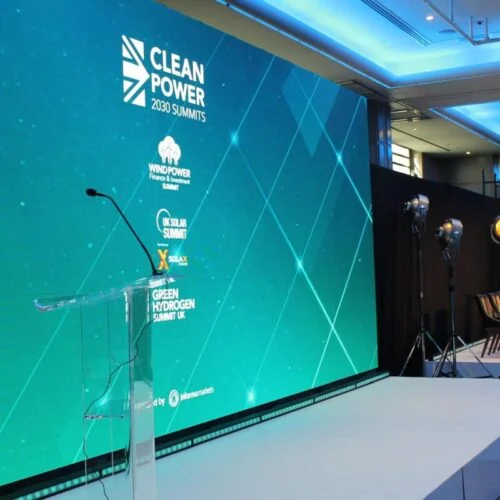In this contributed blog, Trevor Wills, CEO of Pulse Clean Energy, addresses the issues holding back the ambitious battery storage pipeline.
In recent weeks, we’ve seen headlines about the UK coming “within a whisker” of blackouts, alongside rising concerns about the complexities of relying on weather dependent energy generation. As we move towards a greater reliance on renewable energy, battery energy storage systems (BESS) are key to maintaining a consistent and dependable power supply. BESS can lower energy costs, increase grid stability, and enhance energy security. With these benefits in mind, how can we ensure that we deploy BESS technology at the pace required?
The global energy storage industry is on the brink of a transformative leap as it gears up to meet the ambitious global target of 1,500GW of installed storage capacity by 2030 in the Green Energy Storage and Grids Pledge. According to Bloomberg NEF, the storage industry is projected to experience an annual growth rate of more than 20% through to 2030. While this is an impressive growth rate, it will not be enough to meet the target above, or global system needs. We must do more to accelerate our efforts in the coming years—a monumental task for the industry.
The challenges we face in accelerating BESS installation can be placed broadly into three buckets: technical challenges, financial challenges, and human challenges. We have historically proven very adept at the first two (technical and financial), addressing them with pace and innovation. We can also be very good at the third (human), but these challenges often take us more time to address as we struggle to align on policy directions, regulatory complexities, and important requirements to engage with communities. However, time is something we have increasingly less of, as we work towards our goal of having a cheaper, more sustainable, and more secure energy system. It is critical that we focus on picking the low-hanging fruit at a faster pace.
Building community support
Our efforts should start by building trust in the community. There are concerns about the safety of batteries and we need to address these. While there have been some high-profile events involving batteries, they are remarkably safe when managed professionally in large scale installations like grid scale BESS. The entire industry is highly focused on safety. It is our top priority.
The industry can do a better job of explaining the necessary role BESS plays in decreasing energy bills and increasing energy security, and we will. We believe in transparency, engagement, and ongoing dialogue to ensure that we build community trust and support. Cleaner, lower cost energy systems improve lives and enable communities to thrive.
Developing infrastructure to bridge the gap between generation and demand is just one part of the equation. Equally important is addressing the concerns of people impacted and helping them see how this transformation will positively impact their lives, bringing local jobs, cheaper energy bills, and more security in electricity supply.
Tackling the grid connectivity challenge
The power sector already has the technology it needs to meet our ambitious clean energy targets. No miracles are needed here. What we must focus on are issues related to policy and grid connectivity.
It’s widely acknowledged that the grid connection queue needs reform. Last year alone, the queue experienced an extraordinary surge, with over 1,700 applications submitted. The total capacity in the queue more than doubled to over 700GW—far surpassing the energy system’s projected demands for both 2030 and even 2050, leaving a growing bottleneck in energy development.
The National Energy System Operator (NESO) and Ofgem have been working hard to address this, but we can all move faster and more collaboratively. We need to prioritise projects that are actually going to get built and we applaud NESO’s efforts to do so.
In tandem, we need to identify the fast, simple opportunities to create immediate impact. While grid modernisation will undoubtedly require huge capital investment, leveraging existing infrastructure or making use of available connection capacity could be very effective in rapidly scaling energy storage capacity in the short-term, using available technology.
Addressing the skills shortage
Over the next 25 years, the energy sector will need to recruit hundreds of thousands of skilled professionals to bolster the country’s energy workforce. With this accelerating demand, talent pools will be stretched across several critical areas, relating to the design, construction, and operation of energy infrastructure. There are significant opportunities for workers to support these essential functions. However, the demand for skilled professionals far outpaces the current supply. We need to do more to encourage training and re-training in these areas.
To overcome this challenge, we must prioritise the development of comprehensive training programmes and initiatives aimed at equipping new and existing talent with the necessary skills and knowledge. Industry partnerships, along with government-backed education and apprenticeship schemes, will be essential in bridging this gap and ensuring that both the current and next generation of energy professionals are ready to meet the needs of a rapidly evolving sector.
Public-private collaboration
The scale of the challenges facing the energy sector cannot be solved in isolation. Government agencies, such as Ofgem and NESO, must continue to work hand-in-hand with energy storage asset owners, investors, and industry leaders to shape policies that allow competitive markets to solve problems in a way that delivers the highest societal benefits. Importantly, these policies must be simple, flexible, and forward-thinking. Overly prescriptive regulations will only stifle innovation and slow progress.
Policymakers should also focus on ensuring the right incentives are in place for Distribution Network Operators (DNOs) and Transmission System Operators (TSOs) to make the necessary investments in grid infrastructure. We need to create the right incentives and accountabilities to ensure that this infrastructure is delivered how and when it is needed. A competitive playing field must be established that encourages businesses to implement solutions which address current challenges while also future-proofing the sector for sustainable growth and decarbonisation objectives.
For example, we need to ask ourselves whether the current Capacity Market design is achieving its objectives. Simple modifications to reflect the true capabilities of BESS in responding to system stress events would create more competitive outcomes and lower total system costs.
From momentum to action
We are witnessing a fundamental shift in energy markets. 2024 saw a record number of negative prices—a positive for consumers and a trend that we expect to continue. As energy storage grows alongside renewable energy generation and grid modernisation advances, we are moving toward a future where clean energy will not only be more abundant but also less costly.
However, achieving this transformation won’t happen all at once. It requires a determined, step-by-step approach to address each challenge along the way.





